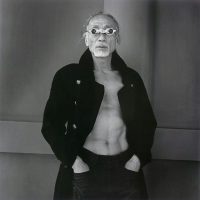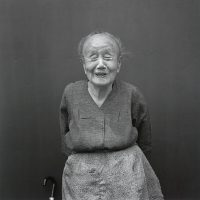At that time, the great majority of his Asakusa portraits adopted further constraints: the single subject stands directly in front of the camera (originally a Minolta Autocord TLR, later the Hasselblad), looking directly at it, and is shown from around the knees upwards.
Kikai may wait at the temple for four or five hours, hoping to see somebody he wants to photograph, and three or four days may pass without a single photograph; but he may photograph three people in a single day, and he has photographed over six hundred people in this way.
He believes that to have a plain backdrop and a direct confrontation with the subject allows the viewer to see the subject as a whole, and as somebody on whom time is marked, without any distracting or limiting specificity.
Though Kikai started to photograph in Asakusa simply because it was near where he then lived, he has continued because of the nature of the place and its visitors.



